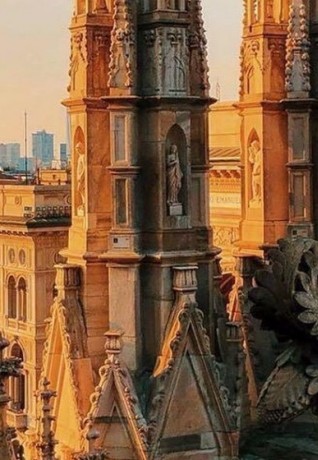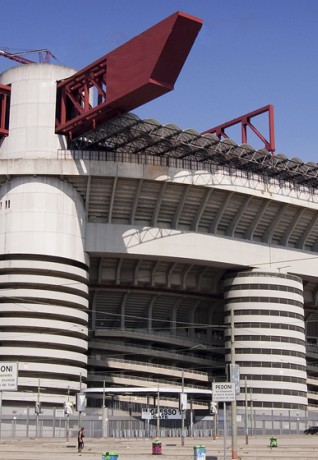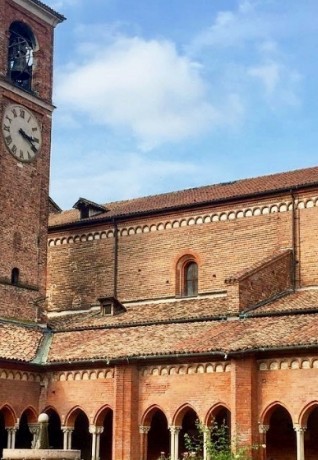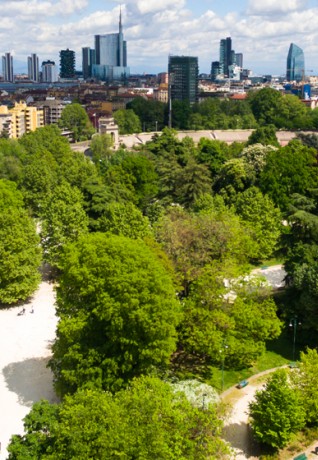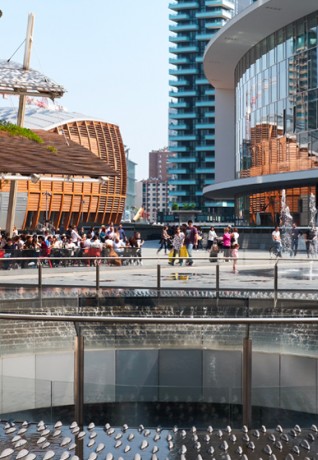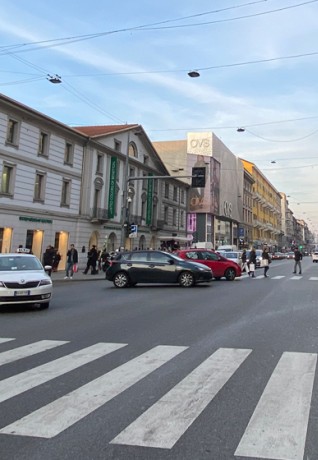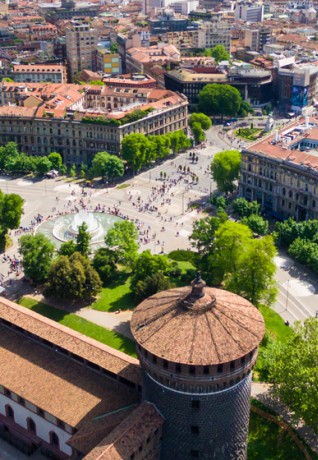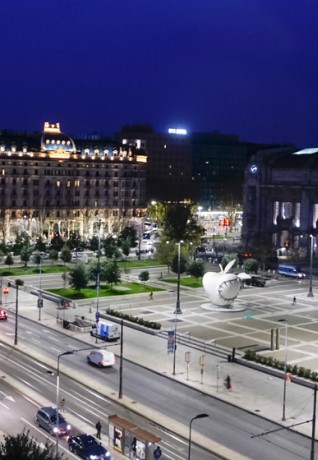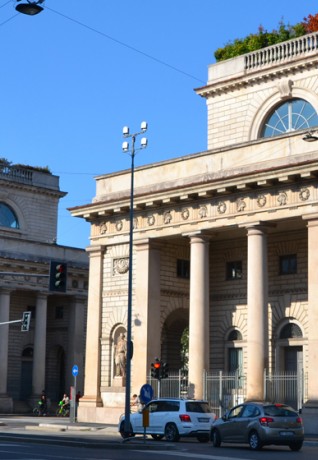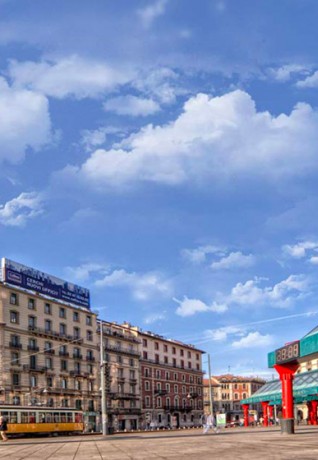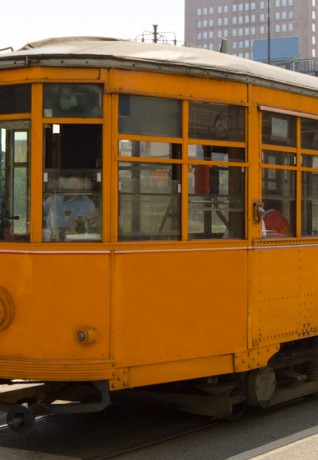Accessible itinerary: the parco delle basiliche
From Piazza Duomo to Navigli
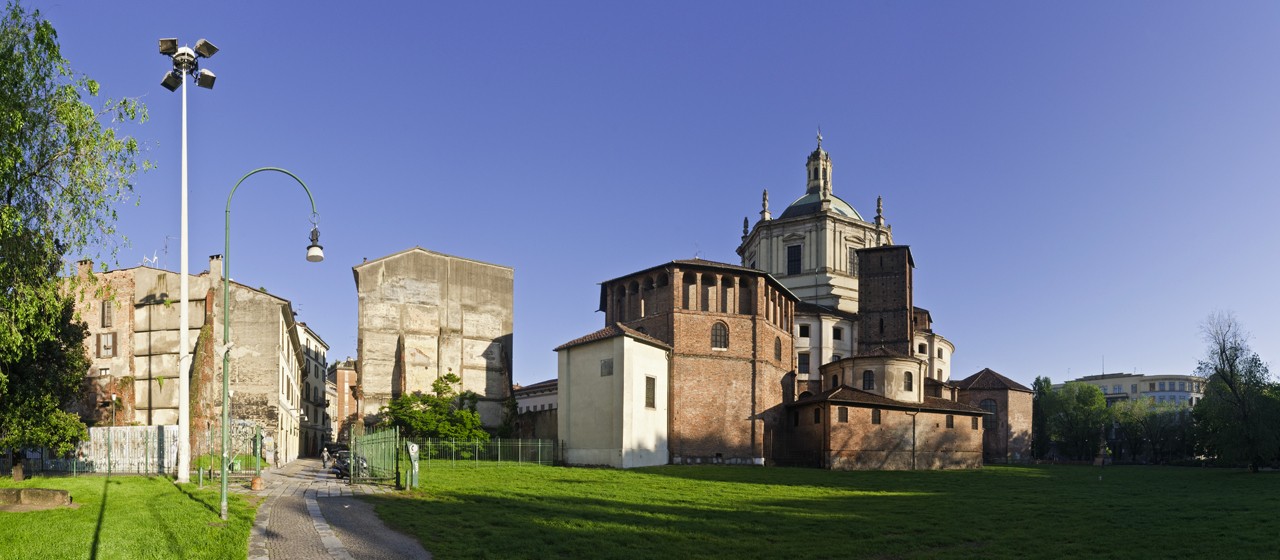
How to get there
The starting point of this itinerary is Piazza del Duomo.
It can be reached by trams 2, 3, 12, 14, 16, 23, 24, 15, 27 and by the M1 and M3 underground lines (Duomo stop).
For more information for passengers with disabilities, please visit the ATM web page.
Piazza del Duomo is a pedestrian area, but you can park in Piazza Fontana or in Piazza Diaz (both with a parking space reserved for disabled pass holders), or in Via Pecorari, behind Palazzo Reale (on the blue stripes or in the parking spaces reserved for disabled pass holders).
Once overcome the equestrian monument dedicated to Vittorio Emanuele II and at the end of the square, cross via Giuseppe Mazzini (paved crossing with tram rails) and reach via Torino, a street full of shops.
Walk along via Torino keeping the left sidewalk and after passing via Speronari, there is a dead end street between two buildings (slight slope and paved pavement, sometimes uneven) that leads to the parvis of the church of Santa Maria presso San Satiro.
The church, built starting from 1470, is one of the Renaissance masterpieces of architect Donato Bramante. In correspondence with the central nave, it is possible to admire an extraordinary optical illusion effect: a perspective escape that makes one imagine the apse. Bramante's brilliant solution solved the problem of the lack of space due to the presence of the road behind the church.
Particularly interesting is the bell tower, considered a prototype of the Romanesque-Lombard models and the Baptistery, which has 3 steps at the entrance.
Going back to via Torino, some meters ahead on the other side of the road, you can see the cylindrical structure of the civic temple of San Sebastiano.
The church was built in 1576 while the plague affected the city. The citizens, encouraged by Bishop Carlo Borromeo, vowed to build a church dedicated to San Sebastiano to which they implored protection from the disease.
The itinerary continues for about 700 meters up to Largo Carrobbio, with several pedestrian crossings in paved stone in good condition; in via dei Piatti the crossing is paved with uneven sections.
Once arrived at the intersection with Corso di Porta Ticinese, turn left, cross via San Vito (crossing in cobblestones with a 3 cm step) and continue for about 200 meters to reach the Colonne di San Lorenzo: 16 marble columns, 8 and a half meters tall, with Corinthian capitals supporting the entablature.
These columns come from some Roman buildings dating back to the II / III century after Christ (probably a pagan temple) that were transported to their current location to complete the Basilica di San Lorenzo.
The square is a pedestrian area, with paving stones and access to the church level is possible via two ramps.
The basilica was built in Roman times (between the 4th and 5th centuries), it was the largest central-plan building in the Western World and it was dedicated to San Lorenzo (a martyr) only in 590, when Milano was already under the Lombard rule.
In the parvis, a statue of Emperor Constantine evokes the Edict of 313 which sanctioned the freedom of worship in the Roman Empire. Inside the basilica there are interesting mosaics and the chapel of Sant'Aquilino, which has preserved its original structure.
The wide spaces around the basilica are much loved by the Milanese people, especially by young people, who love to spend their summer evenings there.
The Parco delle Basiliche is also very popular: a fenced park with wide access gates. The park was designed after the war as an archaeological walk between the basilica di San Lorenzo, its columns and the ruins of the Roman amphitheatre, on the left side of Corso di Porta Ticinese.
Not far from the columns, you can find the remains of the ancient Porta Ticinese that opened along the medieval walls of the city, in the direction of Pavia. Together with the arches of Porta Nuova, in via Manzoni, they are the only trace of the ancient Milanese walls of the 11th century.
Leaving the medieval gate behind, the itinerary continues along Corso di Porta Ticinese (the first part of the road is slightly downhill, with narrow sidewalks; it is recommended to stay on the right side, paying attention to the uneven paving when crossing via Vetere).
On the opposite side of the road, at number 95, a widening leads to the Museo Diocesano (path with a slight slope in asphalt). Inaugurated in 2001 by the Archdiocese of Milano, the museum aims to enhance the artistic masterpieces of the diocese.
The Ticinese district is interesting for the presence of murals and graffiti, some of remarkable quality.
For example, those created behind the Basilica di San Lorenzo (via Pio IV) which represent important protagonists of the history of Miano: the bishop Ambrogio, Giuseppe Verdi, Leonardo da Vinci and Napoleon Bonaparte.
Walking along Corso di Porta Ticinese, after visiting the Diocesan Museum (about 150 meters), you reach Piazza Sant'Eustorgio (paving in good condition).
The Basilica di Sant'Eustorgio was probably founded in the 4th century. According to a legend, the chariot with which Sant'Eustorgio transported the relics of the Wise Men, coming from Constantinople, inexplicably stopped in the place where the Basilica was later built.
Every year, on the day of Epiphany, a suggestive costume parade is performed with the "Wise Men" as protagonists who, starting from Piazza Duomo, reach the Basilica di Sant'Eustorgio to bring the gifts to the Holy Family.
Leaving Piazza Sant'Eustorgio behind, turn left, continue till the pedestrian crossing and reach Piazza XXIV Maggio (paved sidewalk in good condition), where you can see the Darsena and the Navigli (the canals of Milano).
From Piazza XXIV Maggio you can take trams 3, 9 and 19.
Alternatively, you can reach the Porta Genova M2 stop (entrance accessible with a stair lift in via Valenza, at the crossroad with via Casale).
For more information for passengers with disabilities, please visit the ATM web page.

 Log in
Log in


